Welcome to LAIXL, producing EL testers, IV testers, and drone EL
uav-thermal

Model: LX-H403 Product Introduction Photovoltaic cleaning robots are used for cleaning solar panels in photovoltaic power plants, with the advantages of speed, e...
咨询电话:+86 177-0622-2370
Model: LX-H403
Product Introduction
Photovoltaic cleaning robots are used for cleaning solar panels in photovoltaic power plants, with the advantages of speed, efficiency, and convenience. Lexus has developed a new type of cleaning AGV robot small car, which has long endurance energy storage and remote control functions. The whole machine has long axis rolling brush and non curtain wet cleaning functions, which can meet the cleaning needs of different types of photovoltaic power plants.
The LX-H403 is equipped with damping tracks that can be used in photovoltaic power plant environments such as agricultural photovoltaic complementarity, fishing photovoltaic complementarity, factory roofs, and wilderness ponds where personnel cannot stand or large equipment cannot enter. The entire device has undergone lightweight design and EL hidden crack detection certification, and there is no risk of hidden cracks in the photovoltaic board during the cleaning process.
Robots can choose from a variety of cleaning methods, including both wet and dry cleaning, and can also clean environments without water. Can be connected to an external power supply for operation.By using a remote control to monitor the movement of the equipment, it greatly reduces the labor of personnel and can complete 1.5-2MW of photovoltaic power plant cleaning work per day.

LX-H403 Application Fields
Agricultural photovoltaic complementarity
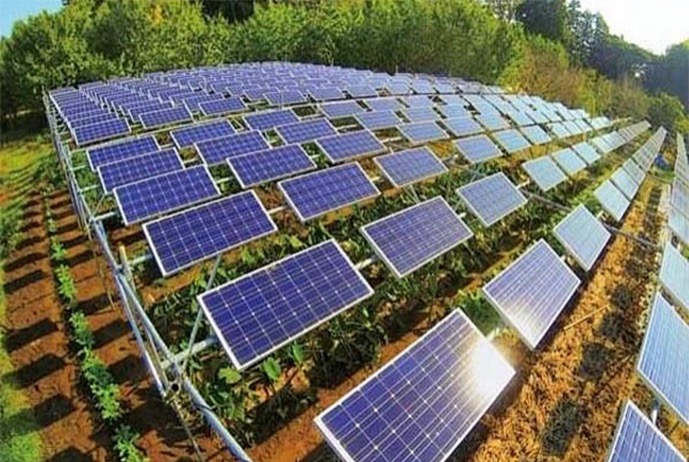
Fishery light complementarity
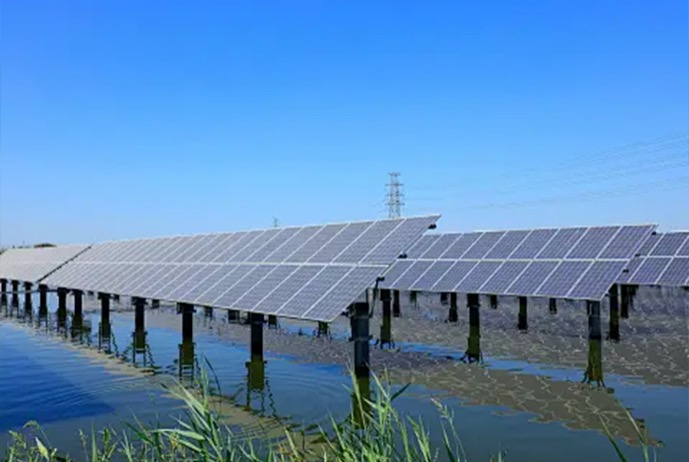
Roof of the house
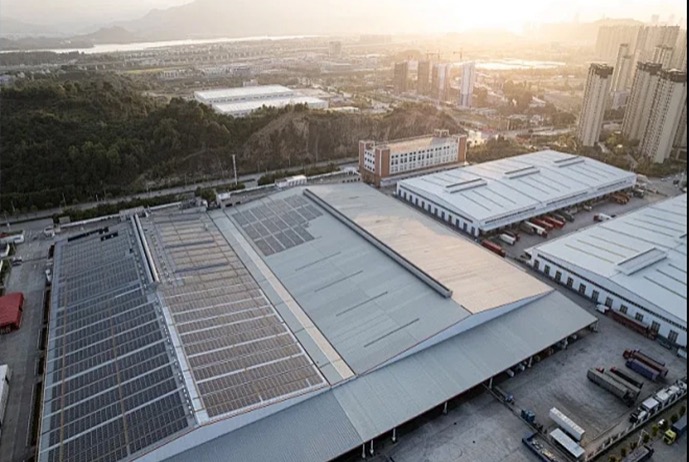
Centralized electricity

LX-H403 hardware advantages
Ultrasonic anti fall
When the robot is operating the edge of the photovoltaic panel, the ultrasonic sensor detects that it is suspended and will automatically trigger a command to stop moving forward/backward; At this time, the red warning light on the vehicle body is constantly on, and the cleaning vehicle is moving in the opposite direction. After remotely controlling the safe area of the photovoltaic panel, the cleaning vehicle continues to move forward, backward, left, and right. The robot will automatically filter the installation gap of the photovoltaic module (about 2CM), and will not trigger a stop when passing normally.
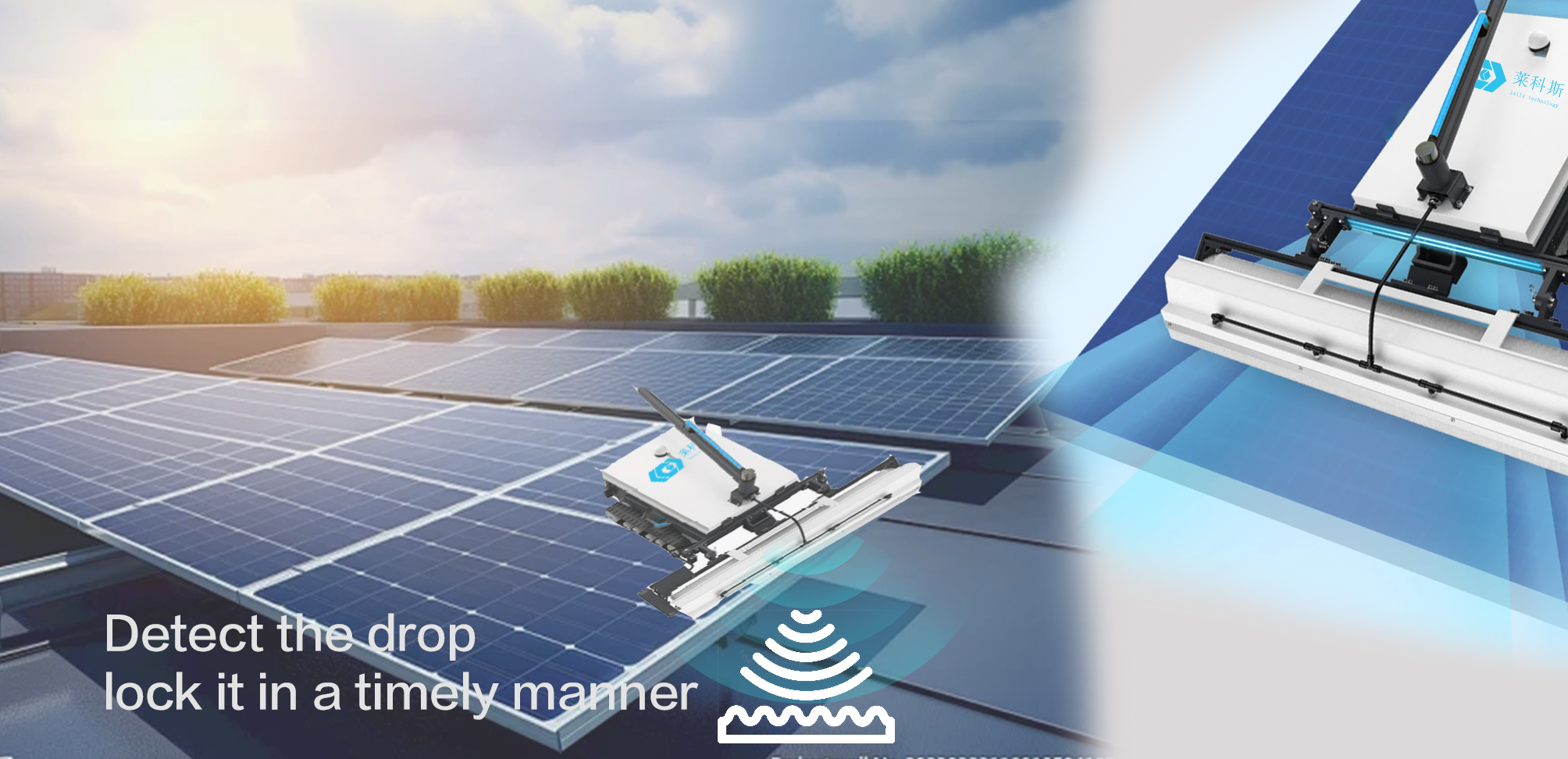
Sensors can be actively shielded
Cross spacing function: When there is a distance of 10-15cm between each array of photovoltaic modules, the remote control's upper left shielding function button can be long pushed, and the anti fall function can be manually shielded at this time. After controlling the joystick to move the cleaning vehicle through this distance, the shielding function button can be released, and the anti fall sensor will automatically activate.
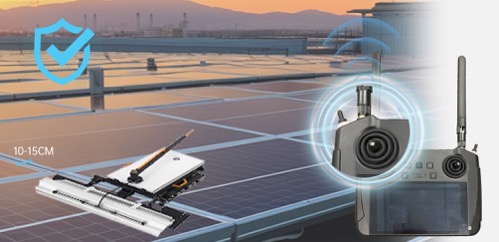
Bridge cross group serial cleaning
The cleaning operation between different photovoltaic strings has a span distance, which can be achieved by installing cleaning bridges to assist the operation of robots and small vehicles, achieving a higher cleaning efficiency and significantly reducing labor costs for the entire station span.

Track chassis all terrain operation
Track type chassis, patented anti-skid tracks and nylon rollers, further reduce the weight of the whole machine, thereby reducing the risk of hidden cracks. At the same time, the tracks have higher anti-skid and damping capabilities, and have better performance on photovoltaic glass floating dust and water wet surfaces. They can operate on dry glass panels with a maximum inclination of 30 degrees.

LX-H403 Industry Standard
National Industry Standards
The equipment complies with international and industry standards and can serve as a third-party measurement basis.
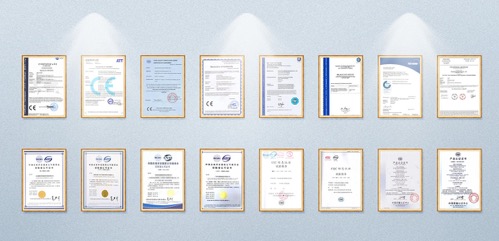
◎ GB 50794-2012 Construction Code for Photovoltaic Power Stations ◎ GB/T 19963-2012 Cleaning of Photovoltaic Modules
GB/T 37273-2018 Photovoltaic Module Cleaning Management Specification for Photovoltaic Power Stations
◎ Best Practice Guidelines for Cleaning and Maintenance of Photovoltaic Modules released by TUV Rheinland ◎ Standard Practice Guidelines for Cleaning Photovoltaic Modules released by IEC
◎ GB/T 9535-1998 Design, Identification and Type Approval of Crystalline Silicon Photovoltaic Modules for Ground Use ◎ IEC 61646:2008 Design, Identification and Type Approval of Thin Film Photovoltaic Modules for Ground Use
◎ IEC61853-2011 Photovoltaic Device Performance Testing and Energy Level
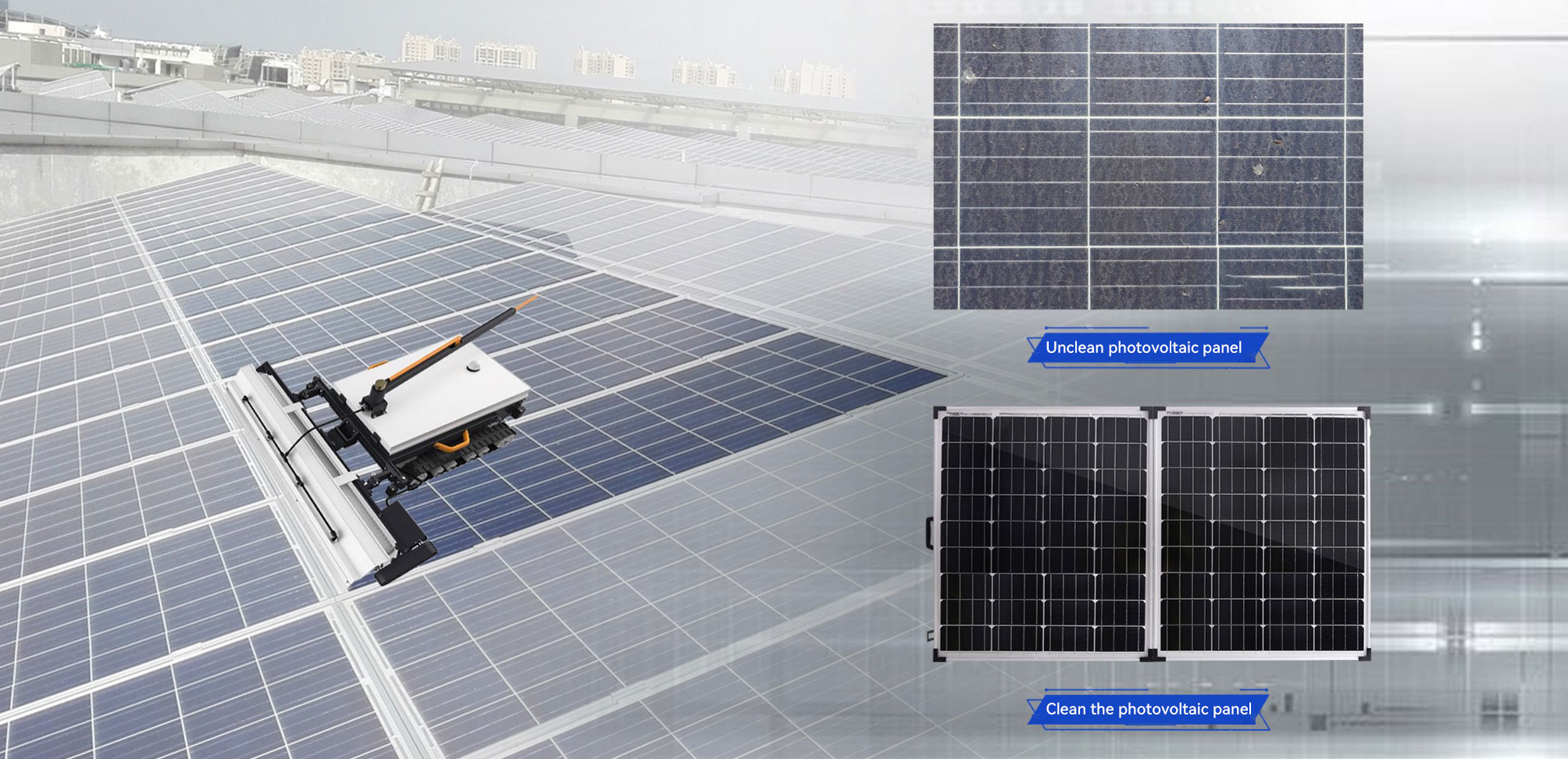
LX-H403 hardware advantages
The robot chassis adopts imported rubber anti-skid tracks, which have superior anti-skid and passability. The tracked vehicle can still work on uneven environments like walking on flat ground.

Through sexual protection
Within the tilt range of photovoltaic modules within 15 degrees, the robots can work normally without slipping; Can be arranged independently within a distance of 15cm between components.
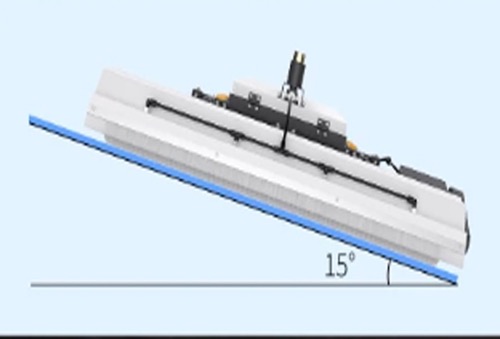
Water curtain quick cleaning
The front end of the robot roller brush is equipped with multiple water spray devices that emit fan-shaped sprays which connect to form a high-pressure water curtain, quickly driving the sewage off the photovoltaic panels.
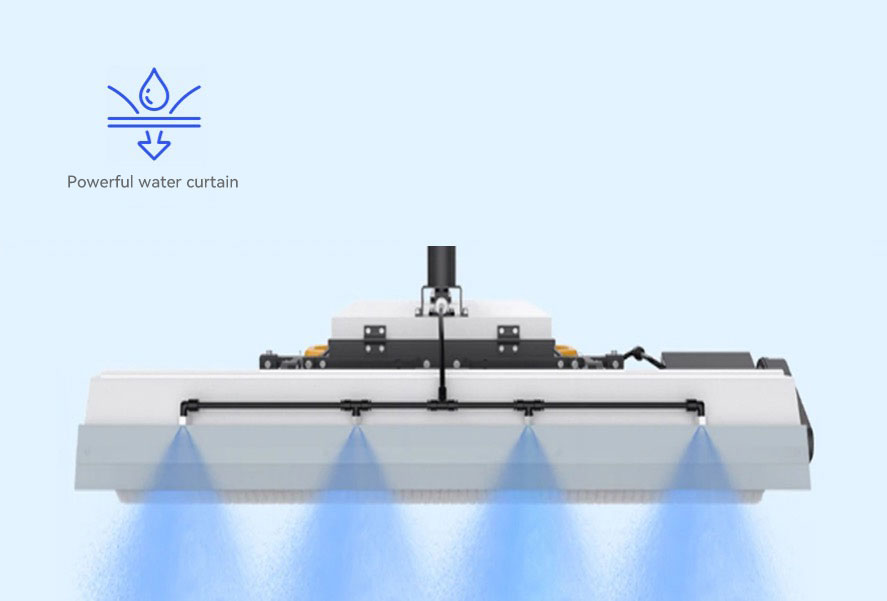
Low battery reminder
When a single battery has a range of 4-5 hours and the battery level is below 20%, the red light on the body will flash, indicating a return trip to replace the battery. Avoid running out of battery.
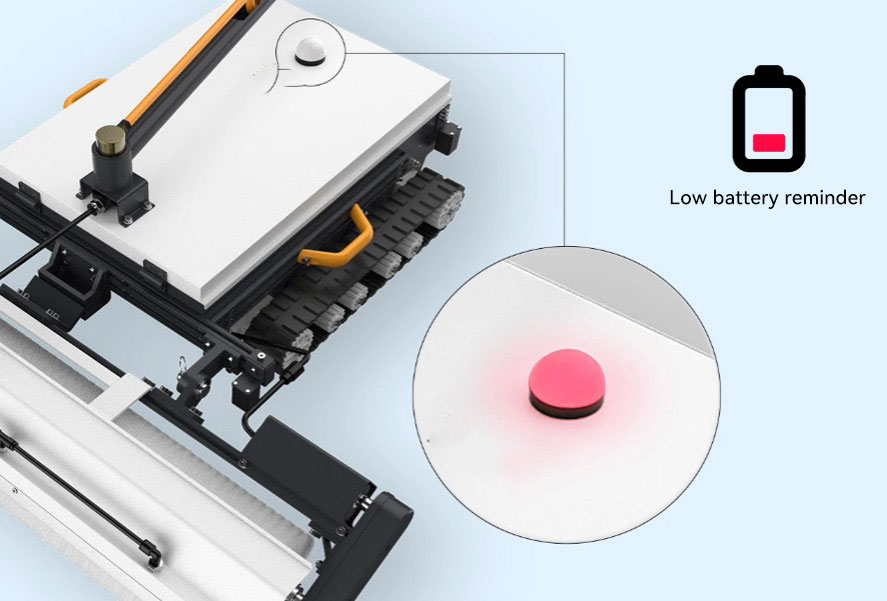
150 meter remote control cleaning
The robot adopts long-distance wireless remote control, with a control distance of up to 150 meters, making manual operation more flexible.
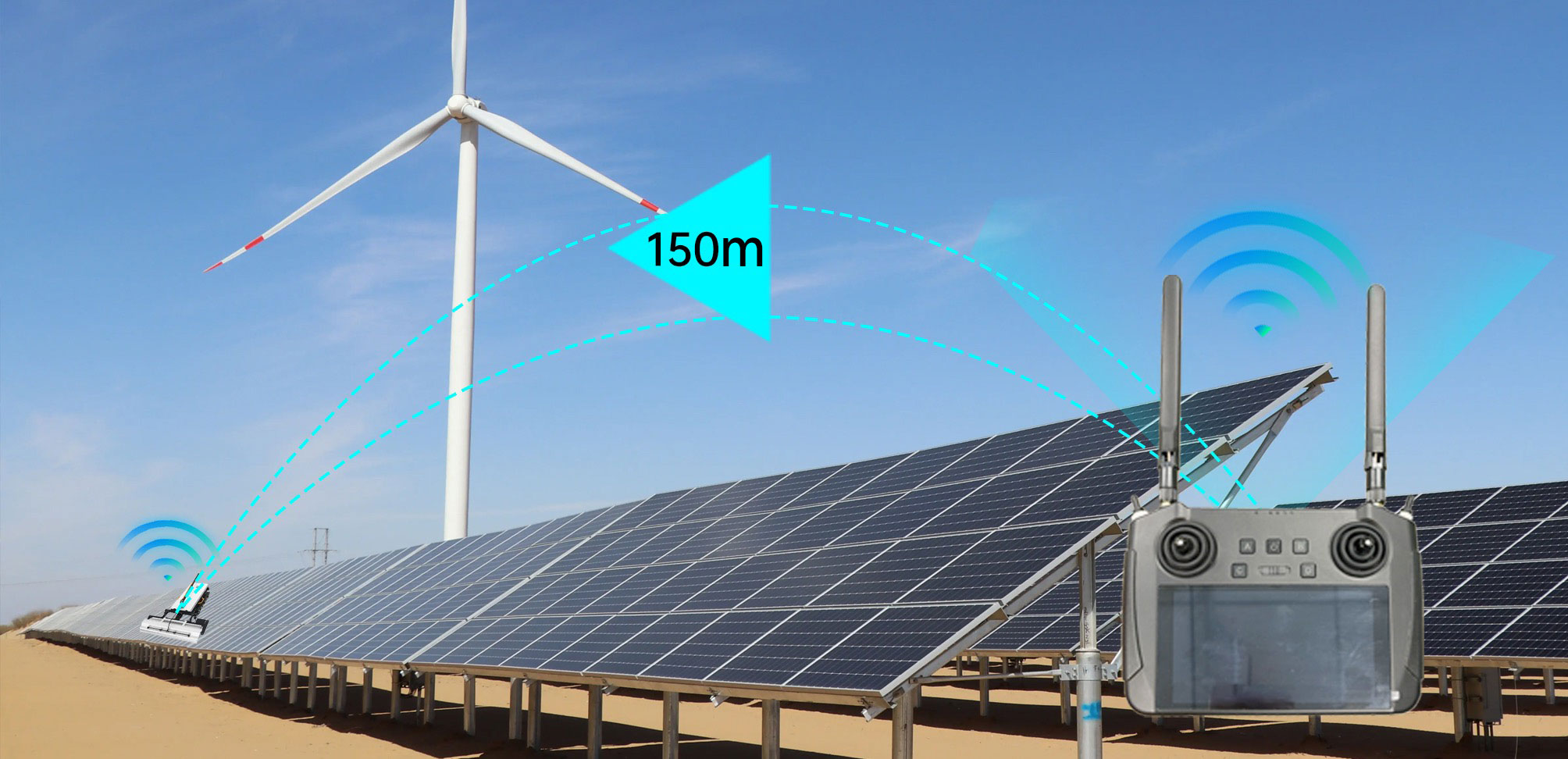
Electric roller brush water washing and washing dual-use
The robot adopts a rotating cleaning roller brush and is equipped with a non curtain nozzle. According to the on-site inspection requirements, it switches between cleaning and wet cleaning. In the fast cleaning mode, the robot's small car can clean 2MW photovoltaic power plant panels in one day.
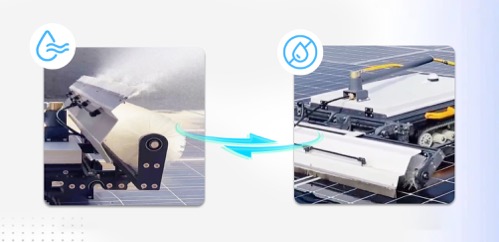
LX-H403 Detailed Parameters
| Model | LX-H403 |
| Application scope | Cleaning of photovoltaic solar cell panels |
| Work efficiency | 1-2MW/10 hours |
| Cleaning type | Wet washing with water curtain/roller brush washing |
| Water supply method | Water faucet/water pump |
| Maximum water consumption | 20L/minute |
| Cleaning width | 1100mm |
| Travel speed | 22m/minute |
| Idle speed | 250 revolutions per minute |
| Endurance | 4-5 hours/1 set of batteries |
| Work perspective | Wash with water at 15 ° C/Wash with water at 15 ° C |
| Roller brush material | New nylon thread (replaceable consumables) |
| Motor type | DC brushless motor |
| Operation method | Wireless remote control |
| Working temperature range | -20-50℃ |
| Exterior dimensions | 1200*1000*350mm |
| Equipment weight | The weight of the host is 29KG; The weight of the brush stick is 7KG; Battery weight 3.5KG/piece |
| After sales terms | One year warranty, certificate of conformity, operation video, remote technical support |
LX-H403 Configuration Checklist
| Number | Category | Name | Quantity | Unit |
| 1 | Host | Robot car host | 1 | SET |
| 2 | Electric roller brush | 1 | PC | |
| 3 | Remote control | Wireless remote control handle | 1 | SET |
| 4 | Battery | Small car lithium battery | 2 | PC |
| 5 | Accessories section | Spare tool accessory kit | 1 | PC |
| 6 | Explanation file | Quality assurance card, certificate of conformity | 1 | SET |
LAILX is committed to the research and production of photovoltaic testing equipment, including EL testing series, portable EL detectors, string EL detectors, drone EL testers, IV power testing series, portable IV testers, power quality analyzers, and other related photovoltaic power station testing equipment and photovoltaic production line laboratory testing equipment.

2024.12.31

2022.04.01
 +86 177-0622-2370
+86 177-0622-2370
Address: 4409 Wuzhong Avenue, Suzhou City, Jiangsu Province
Phone: +86 17706222370
Email: el@lailx.com

LINE